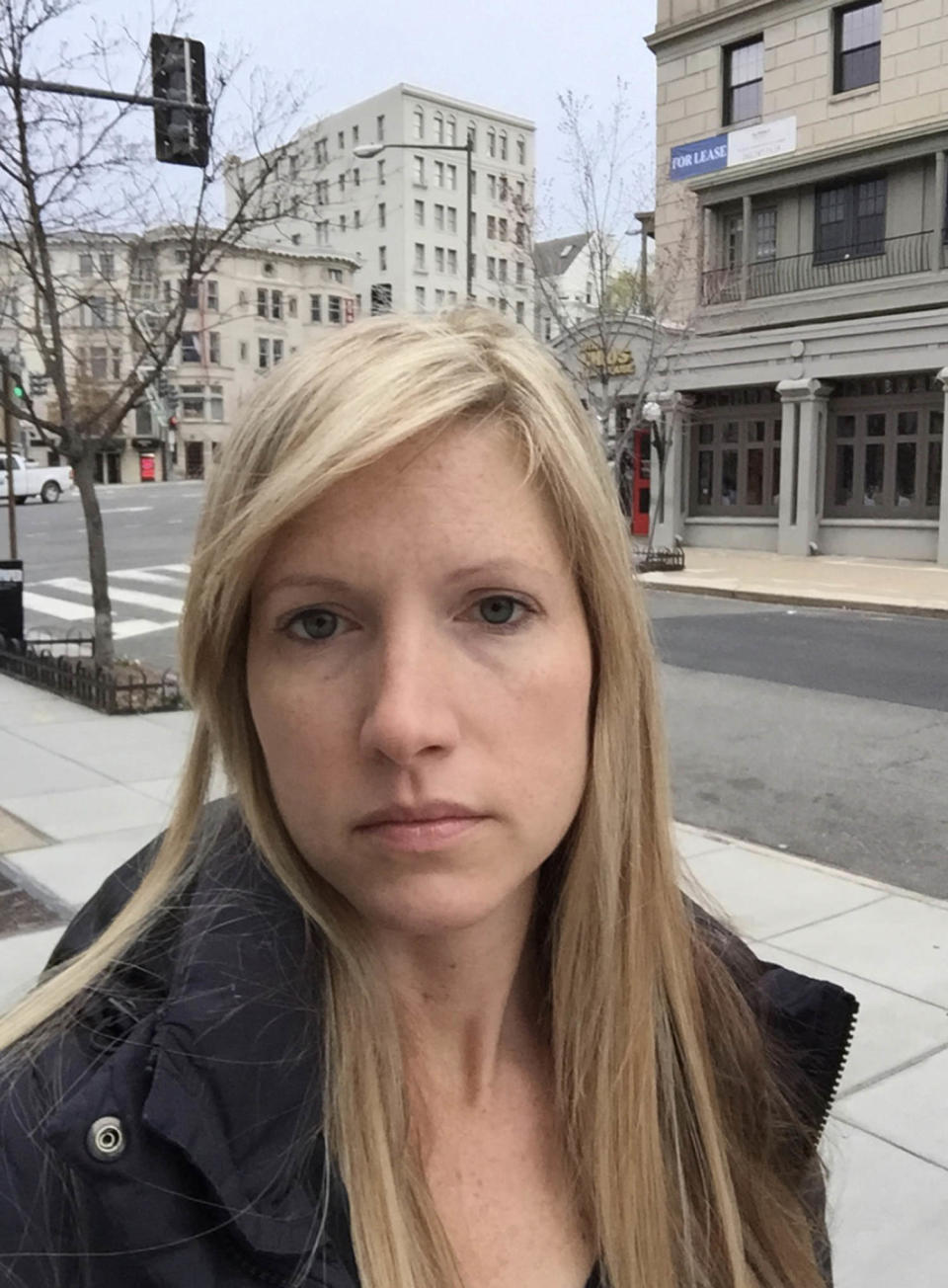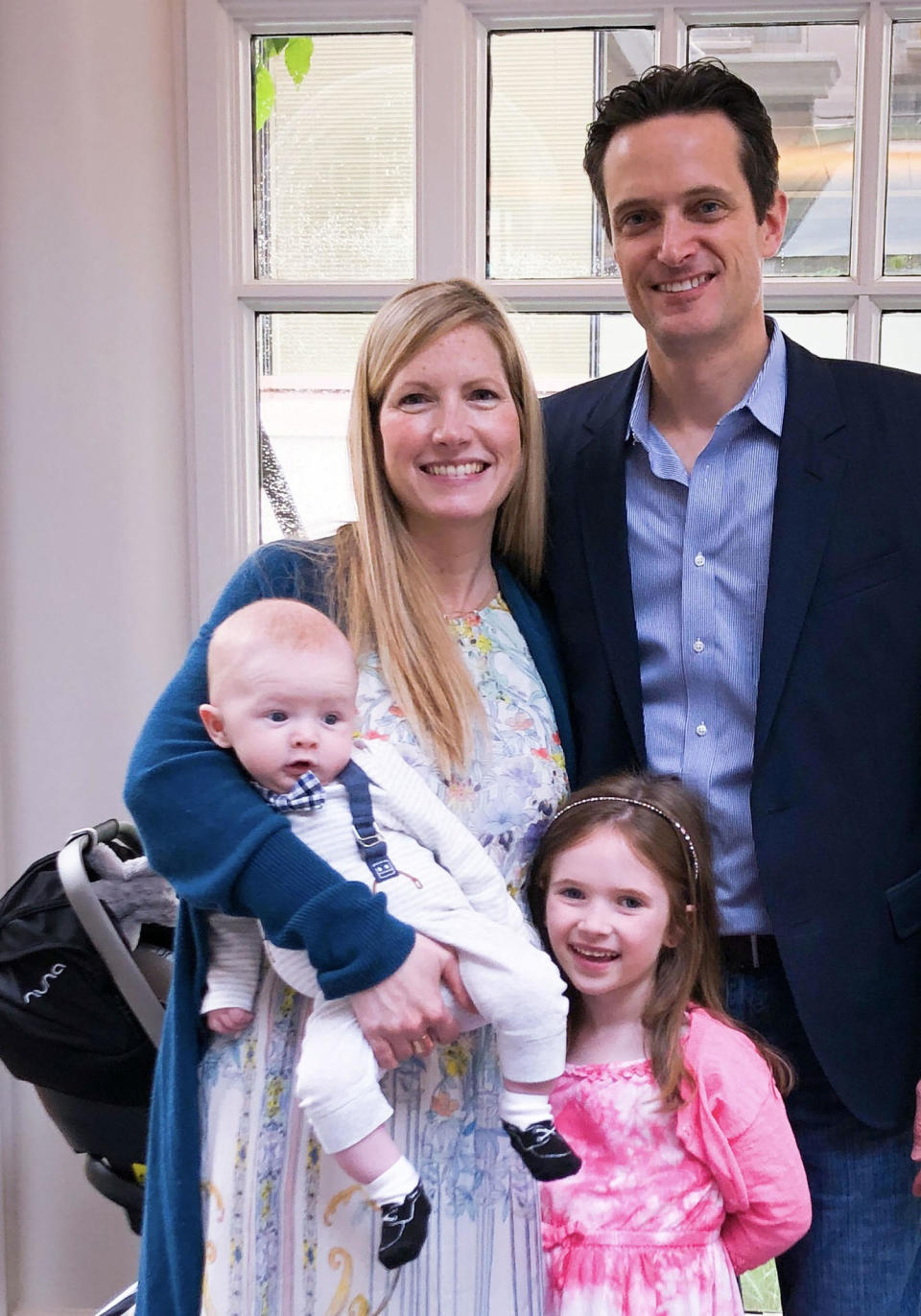I went through fertility treatments for 10 years, and I'd do it all over again
April 21-27 is National Infertility Awareness Week. All week, TODAY will be sharing stories to raise awareness of what it is like to experience infertility.
At 29, I longed to have a baby. All the women I knew were either pregnant or had multiples already. It felt unfair that it didn’t come as easily for me as it seemed to for them. Every morning, I stood in front of my full-length bedroom mirror, my hands holding my empty belly, imagining what it would feel like to carry a child. It seemed as though my husband, Ryan, and I were the last ones without a family.
After several months of trying, I made an appointment to see my OB/GYN. The exam room was empty and cold, and I shivered beneath the paper gown as I waited for the doctor to come in. I hoped she would know why I wasn’t getting pregnant. She did a quick physical exam and found nothing wrong. Reaching into her coat pocket, she handed me a white business card and said, “You need to see a fertility specialist.” I shook my head in disbelief, feeling more confused than when I walked in. Why was this happening? Would I ever be able to have a baby?
A few weeks later, Ryan and I sat together in the crowded waiting room of the fertility clinic. The women around me all looked as anxious as I felt. I clutched my black purse in my lap like a security blanket, anticipating what the reproductive endocrinologist would say. What was wrong with me? Could he fix it? I felt optimistic he could give us a plan.
We reviewed my medical history, talked about my irregular periods, and he ordered blood work and genetic testing. If my results came back normal, I would start fertility treatment. In my mind we were already behind, and I just wanted to begin.
As we left the clinic that day, the barrage of information we were given on testing, treatment and cost overwhelmed me. Our insurance didn’t cover much — only a few medications — so the rest was out of pocket. This would be even harder than we thought from every aspect — physically, mentally and financially. I kissed Ryan goodbye as we left the parking lot to both go to work. “We’re going to figure this out,” he reassured me. I wanted to believe him.
Over the next three years, I had a series of five timed ovulation and intrauterine insemination (IUI) cycles, but every test came back negative. I was failing both myself and my husband. We were living on repeat, and I started to doubt it would happen for us, that maybe we would never become parents. Ryan and I discussed stopping treatment — my body was tired — but we agreed to keep going.

Next, we tried in vitro fertilization (IVF). Changing our plan to start another treatment gave me hope; it felt like progress. But when I went to the specialty pharmacy and picked up the large white paper bag filled to the top with medication, my chest tightened and my hands went numb. Panic set in. The price of treatment and medication already felt unbearable, now this. I was terrified of needles. I never thought I’d choose this path. I never thought I would need to either.
Every night for the next month, my husband injected hormones with medicine that stung and bruised my backside. I had frequent monitoring appointments at my clinic in the early mornings before work to check my follicles to make sure they were growing to prepare for an egg retrieval. It was as though I had to surrender my body and disconnect from being poked and prodded, all to try to have a baby. This became my reality, my new normal.
Once we got the go-ahead from the nurse, we did the final injection, known as a “trigger shot,” in preparation for our egg retrieval the next day. Our first embryo transfer hung within reach, just days away. However, despite good results on the retrieval, my body overstimulated on hormones. My belly and leg swelled and my estrogen spiked. As a result, my fresh embryo transfer (FET) was canceled. Yet another setback. It was devastating.
A month later, I had my long-awaited first frozen embryo transfer (FET). After an agonizing two-week wait, the results came back. My nurse left a voicemail, and Ryan and I listened together. “It’s positive!” she said in a sing-song voice. I smiled — hesitant to celebrate just yet, after all we’d been through — and hugged Ryan. “Positive,” he whispered in my ear, our arms wrapped around each other. Relief rushed in after years of waiting and hoping. Finally, I was pregnant. But I also feared the worst. I knew we were lucky — IVF doesn’t always work on the first try. But, at the same time, we both needed to hold onto a little joy after so much struggle.
Around 11 weeks into my pregnancy, I graduated from my clinic. They gave me a white card with my first ultrasound picture; the cover said, “Congratulations!” It felt surreal, to be moving on to the next phase. Nine months later, I welcomed my daughter, Ella, into the world. My turn had finally come.
Almost two years later, my maternal need to carry another baby came back. We had embryos in cryopreservation, so I didn’t want to wait. I understood the time, resources, energy and financial investment it might take, and I didn’t want to delay us further.
And yet, a part of me thought we had figured it out. We knew what to do this time around. I had no idea it would take us years — again. The next four years moved in slow motion. I underwent eight more embryo transfers — four negative cycles and then four consecutive pregnancy losses.
Each time we got bad news, Ryan held me on the cold ceramic tile of our bathroom floor, as we watched the small rectangular test window fade from stark white to pink with only one line. Not pregnant. I tossed the plastic stick into the trash, along with my dreams of becoming a mother again. Each test that ended in failure made me feel increasingly inadequate as a woman.
After the last miscarriage, my doctor said, “In my three decades of practice, I’ve never seen a case like yours. I’m not retiring until we help you have another baby.”
I had to go through more invasive procedures, this time to remove scar tissue, then we did the final transfer with our last embryo. It was our last chance before surrogacy. The transfer was successful. Ryan and I both felt relieved, but also prayed I would carry the baby to full-term. I was in a constant state of anxiety in those early weeks. I checked my underwear constantly to see if I was bleeding, waiting to fail again, to have another miscarriage. It felt almost inevitable. However, I passed each milestone and was able to carry the baby to term. At 40 weeks, I delivered my son, Noah. I was 39 years old.

Fertility treatment and IVF gave me an incredible gift: the reward of motherhood and the ability to carry my own child, worth every heartbreak and all the years we waited.
During almost a decade in trying to have my two kids, I endured a total of 17 attempted cycles to conceive. I underwent 38 procedures, had 15 failed cycles of fertility treatment, nine embryo transfers, one fluid aspiration and four miscarriages.
No one warns you that going through treatment is not only a physical challenge of constant obstacles, but also a grueling emotional journey ranging from hope and excitement to despair.
Now, when my children come in to say “good morning,” they hold my face and murmur in my ear, “I love you, momma.” The pain I struggled with so long was worth every blood draw, every injection and every failure. But, it’s impossible not to acknowledge what I went through to have them.
Despite my path being so turbulent, I would do it all again.
I know I’m lucky, because not everyone who does IVF has a baby. I think about those women, the ones that were in the waiting room of the doctor’s office on my first day there. They had that same hopeful look in their eyes, squeezing their partner’s hands, praying it would be their turn soon — just like I wanted. I wonder if it worked out for them. I hope they got their chance, and I’m forever grateful that I got mine.
This article was originally published on TODAY.com

